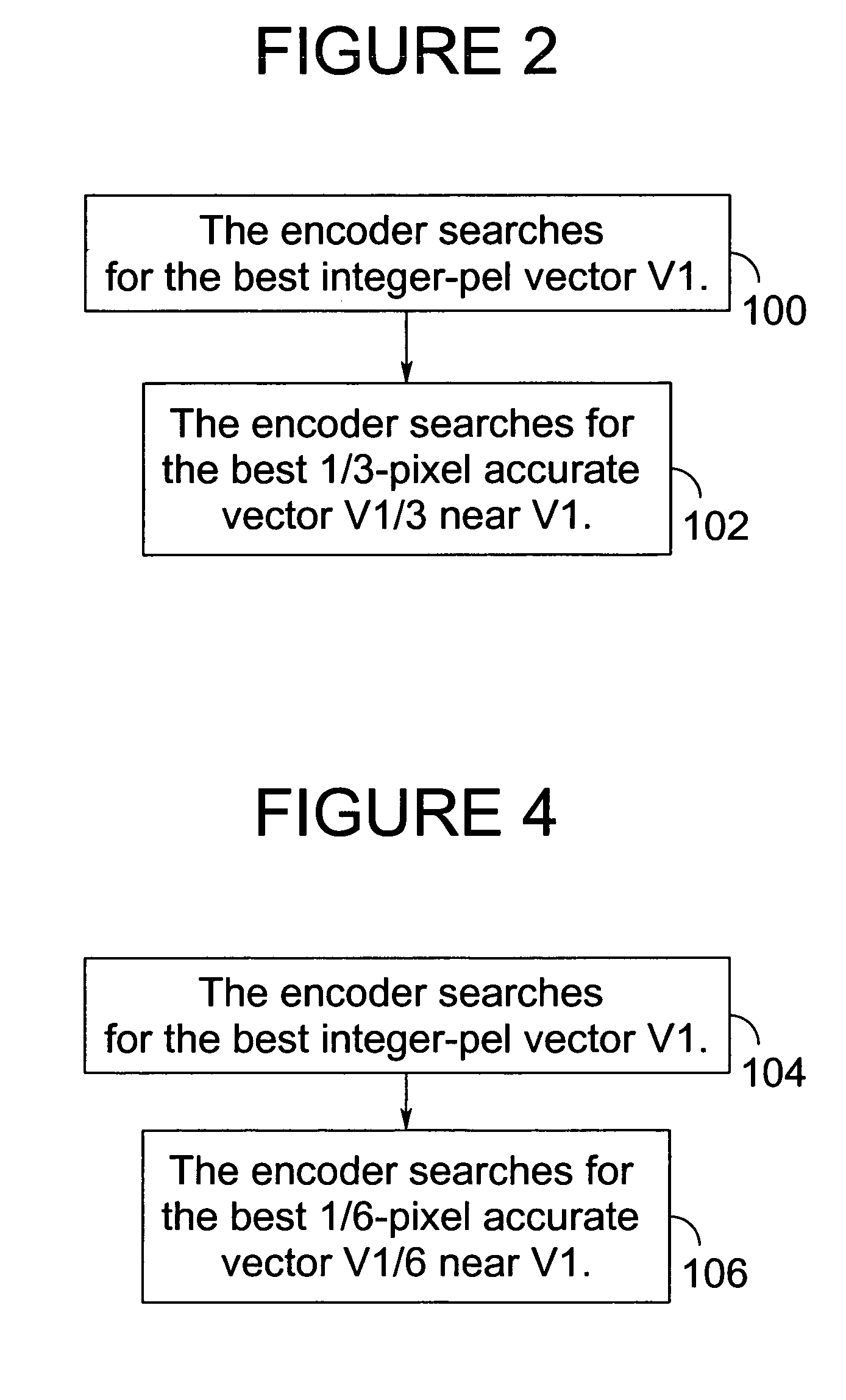Methods for motion estimation with adaptive motion accuracy
a motion estimation and motion accuracy technology, applied in the field of compressing or coding digital video, can solve the problems of insufficient memory and computation requirements, several problems of the telenor encoder, and high computational complexity, and achieve the effect of reducing computational complexity
- Summary
- Abstract
- Description
- Claims
- Application Information
AI Technical Summary
Benefits of technology
Problems solved by technology
Method used
Image
Examples
Embodiment Construction
[0038]The methods of the present invention are described herein in terms of the motion accuracy being modified at each image block. These methods, however, may be applied when the accuracy is fixed for the whole sequence or modified on a frame-by-frame basis. The present invention is also described as using Telenor's video encoders (and particularly the Telenor encoder) as described in the Background of the Invention. Although described in terms of Telenor's video encoders, the techniques described herein are applicable to any other motion-compensated video coder.
[0039]Most video coders use motion vectors with half pixel (or “½-pel”) accuracy and bilinear interpolation. The first version of Telenor's encoder also used ½-pel motion vectors and bilinear interpolation. The latest version of Telenor's encoder, however, incorporated ⅓-pel vectors and cubic-like interpolation because of the additional compression gains. Specifically, at a given macroblock, Telenor's estimates the best mot...
PUM
 Login to View More
Login to View More Abstract
Description
Claims
Application Information
 Login to View More
Login to View More - R&D
- Intellectual Property
- Life Sciences
- Materials
- Tech Scout
- Unparalleled Data Quality
- Higher Quality Content
- 60% Fewer Hallucinations
Browse by: Latest US Patents, China's latest patents, Technical Efficacy Thesaurus, Application Domain, Technology Topic, Popular Technical Reports.
© 2025 PatSnap. All rights reserved.Legal|Privacy policy|Modern Slavery Act Transparency Statement|Sitemap|About US| Contact US: help@patsnap.com



